Cummeragunja: The Aboriginal football team that opened the eyes of White Australia
In the 1930s, Sir Doug Nicholls was one of only two Indigenous player plying his trade in top flight football in Melbourne. But he did not come out of a vacuum, he was the product of a profound Australian Rules football legacy forged by the incredible exploits of a remarkable Aboriginal mission team. It is a story that should be better known by all AFL fans and Australians.
On Monday June 25, 1894, a letter was read out to the esteemed company of men gathered at the meeting of the Bendigo Football Association. It was from the secretary of the Cummeragunja Aboriginal Football Club, Thomas S. James, requesting to play a few matches with the local teams and to recommend a gentleman to arrange the matches and undertake the collection of gate money. The club was also prepared to give entertainment in the form of singing, skipping and boomerang throwing.
The Bendigo Advertiser reported, “the letter created much merriment among the delegates. The hand writing was excellent, so much so as to leave one in a state of doubt as to how an apparently educated person could be so unsophisticated as to seriously forward such “a large order.” The letter was “received,” and the secretary was instructed to inform the writer that the club’s fixtures were already drawn up.
Cummeragunja was an Aboriginal Mission Station founded in 1888, situated on the NSW side of the Murray River, near Barmah, where the surviving members of the Yorta Yorta and other tribal groups were able to regroup and rebuild their identities after their near destruction by the European invasion.
Or as the local paper, The Riverine Herald, in 1899 put it, “the population of Cummeragunja today is 205 souls. The conditions under which they live are pleasing to dwell on, as they serve to show that the British race, though their civilising encroachments have resulted in the practical extermination of the aborigines, are mindful of the duty devolving on them to care for the remnants of the race which once owned this valuable continent.
The invaders not only brought their “civilising” religion, but they also brought their British games. Sport provided an opportunity for a despised, dispossessed, disenfranchised people to engage with a racist society and compete with their overlords on “relatively” equal terms.
By 1890, Cummeragunja had already become the pre-eminent cricket team in the Echuca region when it captured the Dobinson Trophy. For logistical reasons it was going to take a bit longer with the code of football that was adopted in the area. Getting together a competitive eleven from such a small population was relatively simple compared to the twenty men, required at the time, to play an Aussie Rules match. Nevertheless, they persisted and entered a team for the Aitken Trophy which was also contested by the teams representing Echuca, East Echuca and Rochester.
In their first match, the “Gunjas” failed to score as Echuca easily defeated them 6 goals, 6 behinds to nil. In their second match against East Echuca they lost 5 goals, 5 behinds to 2 behinds. The local paper described some of the team as being very fleet of foot, and had they possessed a little more knowledge of the game the results might not have been so disastrous for them. They didn’t win a game that season.
The following year, after successfully defending their cricket title, the local scribe claimed that with a little more scientific play, the “Gunjas” would go very near winning the football trophy. They didn’t win the trophy, but they did notch their first win against a serious opponent in a disputed match against East Echuca.
Getting competition in those days football was problematic. Distances were long, the roads were bad and permission was required by the station manager to leave the mission. This made it difficult to play in sizeable towns like Echuca and Rochester. However, the team kept improving and Cummergunja got the opportunity to play some regular football when they entered the Nathalia District Football Association. They sailed through the 1898 and 1899 seasons undefeated. Cummeragunja was getting noticed and invitations, that in the past had been contemptuously declined, were being accepted.
Cummeragunja, an Aboriginal football team from a small mission that played barefoot was ready to show White Australia how the game of Australia Rules should be played. In the process they shattered perceptions and challenged entrenched prejudices.
What follows are the results, descriptions and commentary from five important matches. I have used excerpts found in newspapers of the time to help tell the story. Some of it is disturbing, even offensive, but it gives us an insight into how a deeply racist society was trying to come to grips with what they were watching.
Wednesday, July 11, 1900
Cummeragunja 4.6 (30) d. Echuca Combined 2.7 (19)
Cummeragunja travelled to Echuca to take on a combined team. According to The Riverine Herald, “there was a large crowd present and the exhibition of football was the best witnessed in Echuca for many years. The handball, short marking and “dodgy” play of the winners was indeed excellent, and brought forth loud applause from the crowd.”
Saturday, July 21, 1900
Cummeragunja 3.9 (27) d. South Bendigo 2.3 (15)
Ten days later another tremendous crowd gathered when they visited Bendigo to take on the reigning premiers. Those who came to witness the game, according to The Bendigo Advertiser, “scarcely expected to see such a capital exhibition as was given by the mission station team. South Bendigo was fairly well represented, and none of the team anticipated that the visitors would display so thorough a knowledge of the game. The visitors outplayed the South at every department of the game, except kicking and high marking. The ground work of the mission team was well nigh perfect, and their running with the ball roused the spectators to enthusiasm.”
The Bendigo Independent reported, “when the colored gentlemen were at their best they played too smartly for anything here. Their speed, cleverness in dodging, superior hand ball, and concerted play fairly opened the eyes of the white men.”
The result reverberated around Bendigo community. They tried to take stock of what they had witnessed. A team belonging to a maligned race of people, playing barefoot, just defeated the best of British and Bendigo with the crowd cheering them on to victory and appreciating their display. It just didn’t make sense. On the Wednesday after game, a quite extraordinary piece of commentary by “Rambler” appeared in The Bendigo Independent.
ABORIGINAL FOOTBALLERS.
It was a sight that appealed to the imagination to witness the dusky aboriginals at the Upper Reserve on Saturday playing at football. The Australian aborigines are amongst the lowest grade of human beings in intelligence.
The Australian “natives,” as the descendants of Britishers style themselves, can certainly claim to be possessed of as much intelligence as any race under the sun. Furthermore, they boast, and lightly too, that in all manly sports they can give the whole word a lead, including the mother country.
And yet here in Bendigo, the “pivot” of Australia, was to be witnessed the sight of its best team of footballers having rings run round them (and those very literal ones) by the despised and fast dying aboriginal.
It was a sight to make the proud Britisher feel humble, or at any rate to shake his confidence in the superiority of the race.
The aboriginals, who hail from the mission station at Cummeragunga, near Echuca, are naturally speedy and lithesome, and added to this they had acquired a very real knowledge of “ye British game of footballe.”
The large crowd who witnessed the game were aroused to a high pitch of enthusiasm at the exhibition given by the blacks, and cheered them to the echo. The South Bendigo boys had to retire somewhat crestfallen, and considerably blown for the dusky lads had run them off their legs.
Wednesday, August 1, 1900
Cummeragunja 8.7 (55) d. South Bendigo 3.1 (19)
Cummeragunja returned to take on Echuca Combined for a second time. Again, in front of a very large attendance, the team asserted its superiority with a comfortable victory and leaving a “demoralised” team in their wake.
Saturday, August 11, 1900
Cummeragunja 4.11 (35) d. South Bendigo 4.6 (30)
Amid a “good deal of enthusiasm,” Cummeragunja then returned to Bendigo to take on a strengthened South Bendigo team, out for revenge, in front of an immense crowd. It was very exciting match and in spite of the desperate efforts of the opposition, Cummeragunja scored a famous narrow victory. According to the The Bendigo Advertiser, “South Bendigo had a better team than on the previous occasion, yet the “darkies” beat them by a couple of points, after a really splendid game.”
The Bendigo Independent reported, “their individual smartness and combined play completely bewildered many of the locals.”
The team’s local celebrity was complete when the weekly newspaper, The Bendigonian, published a team photograph for their readers the following week.
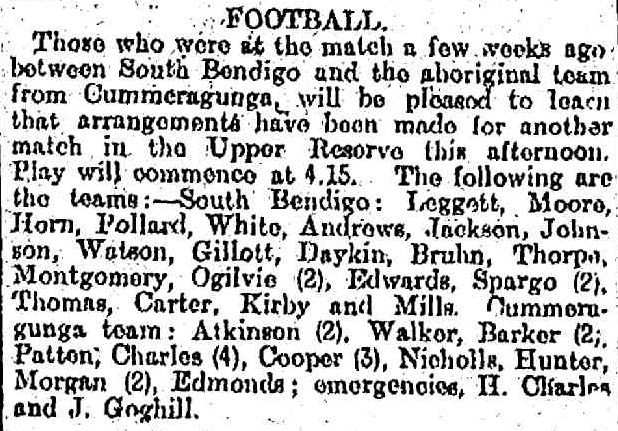
The selected Cummeragunja team for the second match versus South Bendigo as published in The Bendigo Independent, August 11, 1900.
My mind goes back to the esteemed men of the Bendigo Football Association. Yes, the very ones who expressed “merriment” at the letter with the excellent hand writing they disdainfully “received” from Thomas S. James of Cummeragunja Football Club in 1894. I wonder if they witnessed the defeats of their premier football club with the same merriment.
The Visit to Ballarat
Cummeragunja’s fame spread throughout the land. The following year, after being assured three quarters of the gate to defray costs, Cummeragunja traveled even further afield to test themselves against a formidable Ballarat combined team. Two weeks later the very same pride of the Ballarat Association took on the might of a combined VFL team visiting from Melbourne.
Astonishingly, the visit of the Aboriginal mission team proved the bigger attraction. The attendance was the biggest seen in years, the grandstand filled to overflowing. The gate takings amounted to an impressive £74. In comparison the visit of the star studded VFL team could only muster £55.
Saturday, June 1, 1901
Ballarat Association 10.10 (70) d. Cummeragunja 8.6 (54)
Their defeat was not unexpected. A small mission team came up against a superior team who played with greater system. It was noted by one of the scribes that some of the Ballarat players “palpably ‘rested’ on several occasions” but this did not detract from the highly creditable performance put in by Cummeragunja. According to the The Ballarat Star, the generous audience appreciated the fine play of the visitors and described how they “applauded heartily when the Charles brothers and Coghill gave one of the finest exhibitions of handball seen on the ground for some considerable time.”
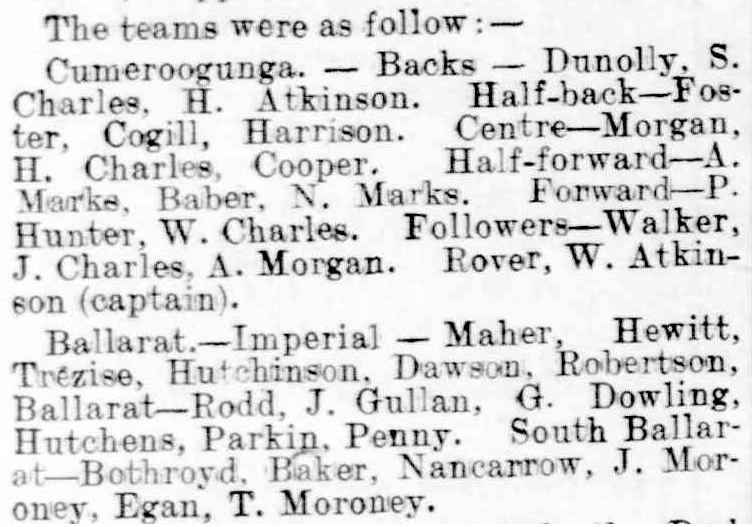
The selected Cummeragunja and Ballarat Association teams as published in the The Ballarat Star.
The visit of the team left an indelible impression. “Half Back” in The Ballarat Star, told his readers, “the visitors’ play was an education to some exponents of the game in Ballarat, especially in their facility in getting rid of the ball. In the language of the showman, there was no waiting or delay. It was evident that the aboriginals recognised that the ball was made to kick, not to nurse—and kick it they did. Their example might well be emulated by many of our local players, who have a great habit of attempting to break through two or three opponents in preference to kicking the ball, and thereby frequently do more harm than good. Several of the visitors were very prominent all the afternoon, particularly the Charles Brothers and the skipper (Atkinson.) The fact cannot be denied that, having the advantage of several matches against first-class teams; the blacks would be worthy opponents for any foes.”
The 1908 Cummeragunja Football Team Postcard (Added August 1, 2019)
Shoot Farken has received this remarkable postcard from John O’Sullivan of the Cummeragunja football team from 1908. On the back of the card is correspondence written by Lucy to her cousin Jane. According to her message, Lucy has put a mark on “my John”. She also pointed out in the middle of the photo (three to the left of John) the solid, handsome figure of Tom Dunnolly, son of the Coranderrk political activist Thomas Dunnolly (1856-1923). Tom Dunnolly would go on to coach the team to great success two decades later.
Below are the photos of the team and Lucy’s message to her cousin Annie.
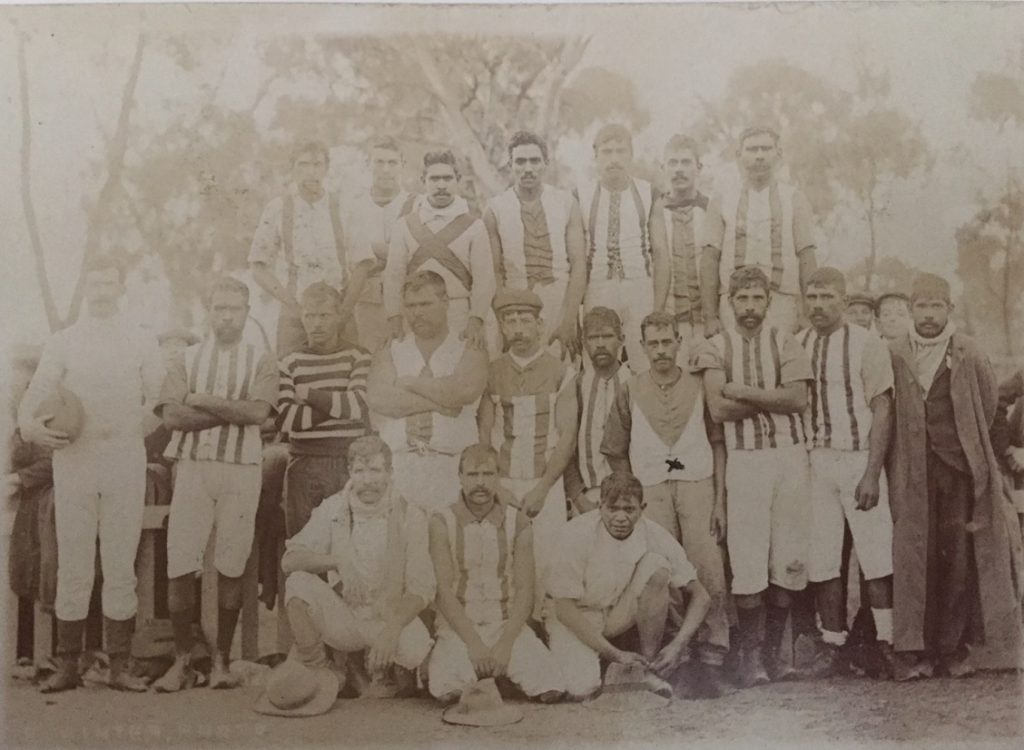
Postcard of Cummeragunja Football Team, 1908. Source: John O’Sullivan
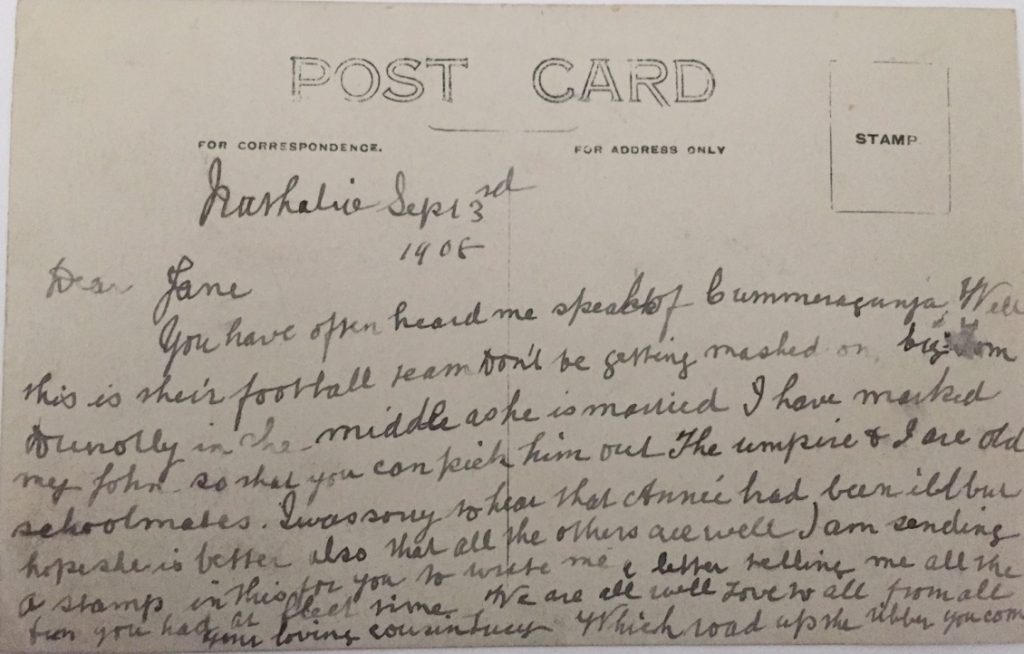
Correspondence from Lucy to her cousin Jane on the back of the 1908 Cummeragunja Football Team postcard. Part of her message reads, “Dear Jane, you have often heard me speak of Cummeragunja. Well this is their football team. Don’t be getting mashed on big Tom Dunolly in the middle as he is married. I have marked my John so that you can pick him out. The umpire and I are old schoolmates.” Source: John O’Sullivan
The Invincibles – The team that was punished for being too good
Between 1926 and 1931, Cummeragunja won the premiership five times in six seasons in the Western Riding and Moira Association. They became known as “The Invincibles.” Their dominance was too much for the local administrators, so they came up with an outrageous solution. They placed a ban on men over the age of 25 playing for Cummeragunja. The team was punished for being too good for their opponents.
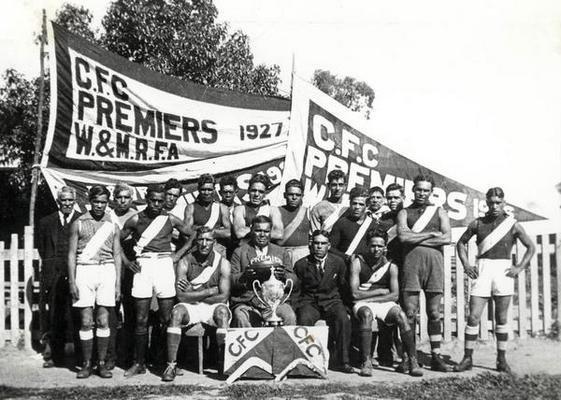
Cummeragunja Football Team (1927). Coach Tom Dunnolly is pictured in the middle behind the premiership trophy. Source: Yorta Yorta Nation Aboriginal Corporation
Tom Dunnolly, coach and veteran of the Cummeragunja’s great matches of 1900, suggested to the association that they, should instead, amalgamate the weaker teams to improve the standard. They did not heed his advice. Cummeragunja pulled out of the 1932 competition as the young men in the team did not have the wherewithal to cover expenses.
In September 1932, and desperately short of match practice, the team journeyed to Deniliquin to take on the Aboriginal team of the Moonacullah Station.
The report in Deniliquin’s The Independent was, to say the least, euphoric. It led with this description.
Playing a brilliant, clean game of football of the type that delights barrackers, the match…was an exhibition of how the game can be played at a fast pace without the players getting ruffled and abusing the morals of the code.
At first the play was congested, but it soon opened out and from then on the onlookers were revelling in a delightful exhibition of pace, excellent shepherding, passing out, and marking.
Australians Rules football as played by our Indigenous people was still opening the eyes of White Australia and they are still being opened to this day.
Conclusion
In 1939, Cummeragunja was admitted to the Echuca Football League. In a tightly contested match, they lost to Deniliquin in the first semi-final.
In the very same year, residents of the Cummeragunja Mission Station staged the first ever mass strike action by Australia’s Indigenous people. Many of them walked out of the mission, crossed to the Victorian side of the Murray River to protest the disgraceful living conditions they were subjected to. A majority of the families who left never returned. Some of them eventually settled in Shepparton where the Rumbalara Football and Netball Club has continued Cummragunja’s important sporting legacy.
On December 9, 1906, Sir Doug Nicholls was born on the Cummeragunja Mission. He learned how to play the game on the local oval. When Doug reached 14, he was moved off under the Aborigines Protection Act (1909) to find work. He took a job with dredging teams constructing levees on the Murray. He played for Tongala, before trying out for Carlton in 1927. They rejected him because of his colour, they said he smelled.
Sir Doug Nicholls, went on to become an Australian Rules legend at the highest level of the game with Northcote in the VFA and Fitzroy in the VFL. The AFL has honoured him by naming this weekend’s “Indigenous Round” after him. Regrettably, the AFL has not (yet) inducted him into their Hall of Fame.
On Sunday afternoon, November 28, 1939, Sir Doug Nicholls addressed the white parishioners of the Wesley Church in Melbourne.
The skeleton in the cupboard of Austraila’s national life is its treatment of the aborigines. We aborigines have not had a fair deal. It was bad enough for us to lose our country, but it is one, of the saddest stories of modern times that we should have become an outcast in our own land, with not even the rights and privileges that are extended to many aliens. We appeal for the right of education, for at least some of the rights of citizenship, for the chance to become useful citizens in the land that was ours by birth.
We have come far since that day. We still have a long way to go.
*The feature photo is of The Cummeragunja Football Team as it was published in The Bendigonian on August 21, 1900.
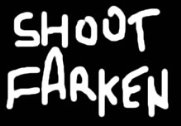
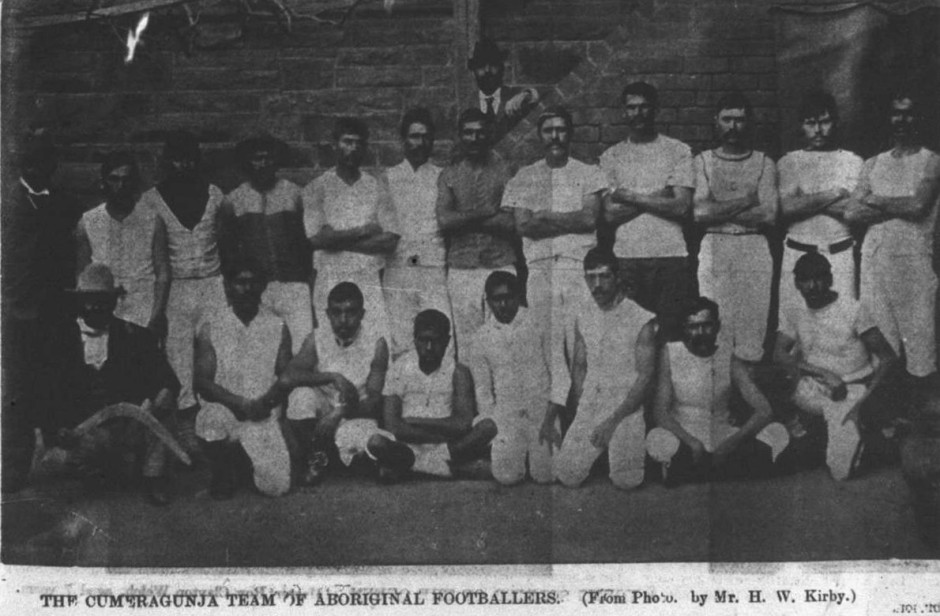

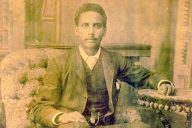
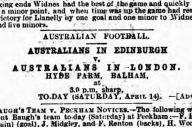
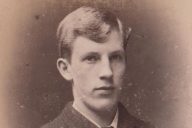










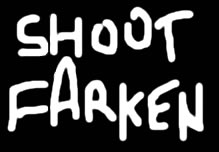
Great article worth reading in full. For history enthusiasts and sports nutters like me this is what its all about. Hopefully the powers that be (read Gillon Maclachlan) take stock and move towards honouring Sir Doug Nicholls in the AFL Hall of Fame.
Thanks William. I appreciate the feedback. Makes the effort and research worthwhile. Hopefully, the powers that be at AFL HQ get to read this as well.
An excellent article, and one that that has for the first time allowed me to see a photograph of my great grandfather (John Patten, featured in the Bendigonian image). Now I just need to figure out which one he is! Thank you.
Hi John. I am so happy that you liked the article and saw your great grandfather somewhere in that photograph. It has really made my day. Thank you!
Athas, this is absolutely superb and timely. I just wonder how many more indigenous teams and players there would have been in the half-century before 1894 if they had been able to get through the force field erected by the white men. I sent Ian the first draft of the outline of an article I am working on for a special issue of Soccer & Society on football in the middle of the nineteenth century and I’m happy to share it with you if you are interested.
Hi Roy, thanks for the kind comment. I have just sent you an email. I look forward to reading the draft.